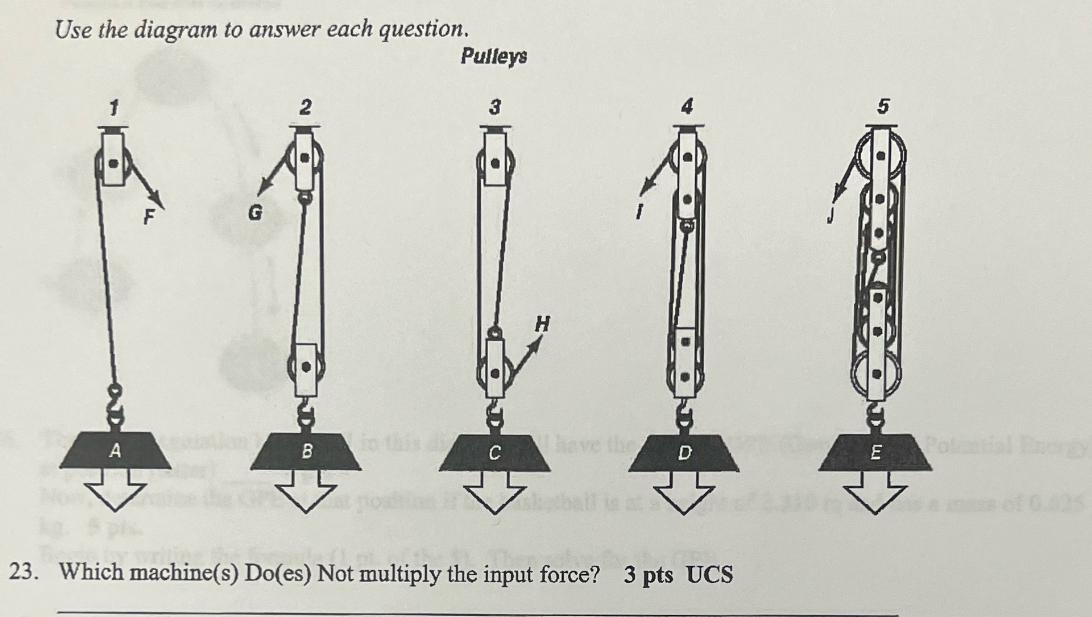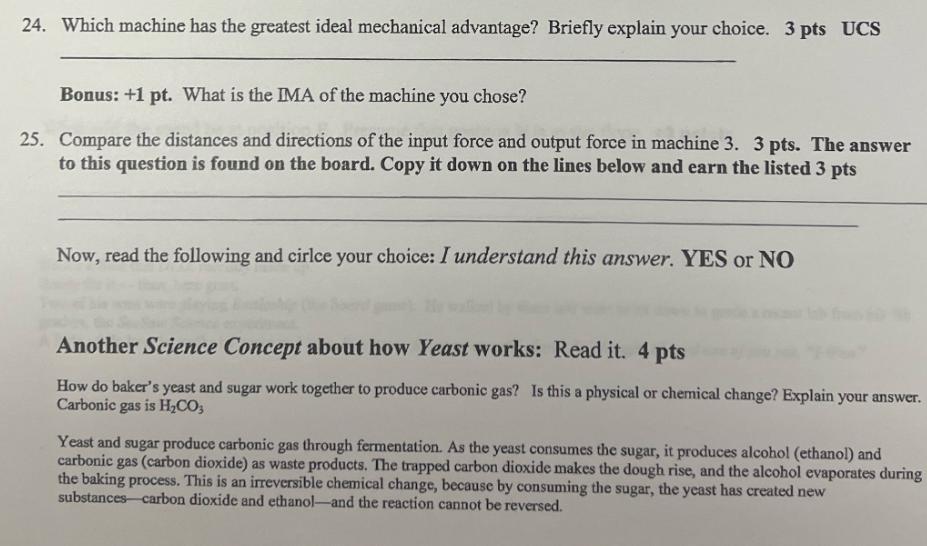Answered step by step
Verified Expert Solution
Question
1 Approved Answer
Use the diagram to answer each question. Pulleys 2 5 3 A B have the C D EPotential Energy V 0.425 23. Which machine(s)


Use the diagram to answer each question. Pulleys 2 5 3 A B have the C D EPotential Energy V 0.425 23. Which machine(s) Do(es) Not multiply the input force? 3 pts UCS 24. Which machine has the greatest ideal mechanical advantage? Briefly explain your choice. 3 pts UCS Bonus: +1 pt. What is the IMA of the machine you chose? 25. Compare the distances and directions of the input force and output force in machine 3. 3 pts. The answer to this question is found on the board. Copy it down on the lines below and earn the listed 3 pts Now, read the following and cirlce your choice: I understand this answer. YES or NO Another Science Concept about how Yeast works: Read it. 4 pts How do baker's yeast and sugar work together to produce carbonic gas? Is this a physical or chemical change? Explain your answer. Carbonic gas is HCO Yeast and sugar produce carbonic gas through fermentation. As the yeast consumes the sugar, it produces alcohol (ethanol) and carbonic gas (carbon dioxide) as waste products. The trapped carbon dioxide makes the dough rise, and the alcohol evaporates during the baking process. This is an irreversible chemical change, because by consuming the sugar, the yeast has created new substances carbon dioxide and ethanol-and the reaction cannot be reversed.
Step by Step Solution
There are 3 Steps involved in it
Step: 1

Get Instant Access to Expert-Tailored Solutions
See step-by-step solutions with expert insights and AI powered tools for academic success
Step: 2

Step: 3

Ace Your Homework with AI
Get the answers you need in no time with our AI-driven, step-by-step assistance
Get Started


